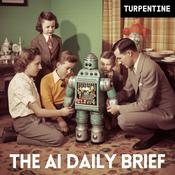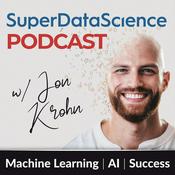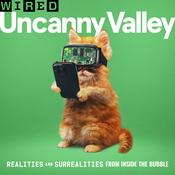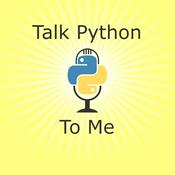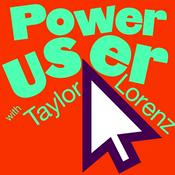375 episodes

The Growing AI Safety Gap: Interpreting The "Future of Life" Audit & Your Response Strategy
2025/12/15 | 34 mins.
There’s a narrative we’ve been sold all year: "Move fast and break things." But a new 100-page report from the Future of Life Institute (FLI) suggests that what we actually broke might be the brakes.This week, the "Winter 2025 AI Safety Index" dropped, and the grades are alarming. Major players like OpenAI and Anthropic are barely scraping by with "C+" averages, while others like Meta are failing entirely. The headlines are screaming about the "End of the World," but if you’re a business leader, you shouldn't be worried about Skynet—you should be worried about your supply chain.I read the full audit so you don't have to. In this episode, I move past the "Doomer" vs. "Accelerationist" debate to focus on the Operational Trust Gap. We are building our organizations on top of these models, and for the first time, we have proof that the foundation might be shakier than the marketing brochures claim.The real risk isn’t that AI becomes sentient tomorrow; it’s that we are outsourcing our safety to vendors who are prioritizing speed over stability. I break down how to interpret these grades without panicking, including:Proof Over Promises: Why FLI stopped grading marketing claims and started grading audit logs (and why almost everyone failed).The "Transparency Trap": A low score doesn't always mean "toxic"—sometimes it just means "secret." But is a "Black Box" vendor a risk you can afford?The Ideological War: Why Meta’s "F" grade is actually a philosophical standoff between Open Source freedom and Safety containment.The "Existential" Distraction: Why you should ignore the "X-Risk" section of the report and focus entirely on the "Current Harms" data (bias, hallucinations, and leaks).If you are a leader wondering if you should ban these tools or double down, I share a practical 3-step playbook to protect your organization. We cover:The Supply Chain Audit: Stop checking just the big names. You need to find the "Shadow AI" in your SaaS tools that are wrapping these D-grade models.The "Ground Truth" Check: Why a "safe" model on paper might be useless in practice, and why your employees are your actual safety layer.Strategic Decoupling: Permission to not update the minute a new model drops. Let the market beta-test the mess; you stay surgical.By the end, I hope you’ll see this report not as a reason to stop innovating, but as a signal that Governance is no longer a "Nice to Have"—it's a leadership competency.⸻If this conversation helps you think more clearly about the future we’re building, make sure to like, share, and subscribe. You can also support the show by buying me a coffee.And if your organization is wrestling with how to lead responsibly in the AI era, balancing performance, technology, and people, that’s the work I do every day through my consulting and coaching. Learn more at https://christopherlind.co.⸻Chapters:00:00 – The "Broken Brakes" Reality: 2025’s Safety Wake-Up Call05:00 – The Scorecard: Why the "C-Suite" (OpenAI, Anthropic) is Barely Passing08:30 – The "F" Grade: Meta, Open Source, and the "Uncontrollable" Debate12:00 – The Transparency Trap: Is "Secret" the Same as "Unsafe"?18:30 – The Risk Horizon: Ignoring "Skynet" to Focus on Data Leaks22:00 – Action 1: Auditing Your "Shadow AI" Supply Chain25:00 – Action 2: The "Ground Truth" Conversation with Your Teams28:30 – Action 3: Strategic Decoupling (Don't Rush the Update)32:00 – Closing: Why Safety is Now a User Responsibility#AISafety #FutureOfLifeInstitute #AIaudit #RiskManagement #TechLeadership #ChristopherLind #FutureFocused #ArtificialIntelligence

MIT’s Project Iceberg Declassified: Debunking the 11.7% Replacement Myth & Avoiding The Talent Trap
2025/12/08 | 32 mins.
There’s a good chance you’ve seen the panic making its rounds on LinkedIn this week: A new MIT study called "Project Iceberg" supposedly proves AI is already capable of replacing 11.7% of the US economy. It sounds like a disaster movie.When I dug into the full 21-page technical paper, I had a reaction because the headlines aren't just misleading; they are dangerous. The narrative is a gross oversimplification based on a simulation of "digital agents," and frankly, treating it as a roadmap for layoffs is a strategic kamikaze mission. This week, I’m declassifying the data behind the panic. I'm using this study as a case study for the most dangerous misunderstanding in corporate America right now: confusing theoretical capability with economic reality.The real danger here is that leaders are looking at this "Iceberg" and rushing to cut the wrong costs, missing the critical nuance, like: The "Wage Value" Distortion: Confusing "Task Exposure" (what AI can touch) with actual job displacement. The "Sim City" Methodology: Basing real-world decisions on a simulation of 151 million hypothetical agents rather than observed human work. The Physical Blind Spot: The massive sector of the economy (manufacturing, logistics, retail) that this study explicitly ignored. The "Intern" Trap: Assuming that because an AI can do a task, it replaces the expert, when in reality it performs at an apprentice level requiring supervision.If you're a leader thinking about freezing entry-level hiring to save money on "drudgery," you don't have an efficiency strategy; you have a "Talent Debt" crisis. I break down exactly why the "Iceberg" is actually an opportunity to rebuild your talent pipeline, not destroy it. We cover key shifts like: The "Not So Fast" Reality Check: How to drill down into data headlines so you don't make structural changes based on hype. The Apprenticeship Pivot: Stop hiring juniors to do the execution and start hiring them to orchestrate and audit the AI's work. Avoiding "Vibe Management": Why cutting the head off your talent pipeline today guarantees you won't have capable Senior VPs in 2030.By the end, I hope you’ll see Project Iceberg for what it is: a map of potential energy, not a demolition order for your workforce.⸻If this conversation helps you think more clearly about the future we’re building, make sure to like, share, and subscribe. You can also support the show by buying me a coffee.And if your organization is wrestling with how to lead responsibly in the AI era, balancing performance, technology, and people, that’s the work I do every day through my consulting and coaching. Learn more at https://christopherlind.co.⸻Chapters:00:00 – The "Project Iceberg" Panic: 12% of the Economy Gone?03:00 – Declassifying the Data: Sim City & 151 Million Agents07:45 – The 11.7% Myth: Wage Exposure vs. Job Displacement12:15 – The "Intern" Assumption & The Physical Blind Spot16:45 – The "Talent Debt" Crisis: Why Firing Juniors is Fatal22:30 – The Strategic Fix: From Execution to Orchestration27:15 – Closing Reflection: Don't Let a Simulation Dictate Strategy#ProjectIceberg #AI #FutureOfWork #Leadership #TalentStrategy #WorkforcePlanning #MITResearch

The $120k Mechanic Myth: Talent Crisis or Alignment Crisis?
2025/12/01 | 34 mins.
There’s a good chance you’ve seen the headline making its rounds: Ford's CEO is on record claiming they have over 5,000 open mechanic jobs paying $120,000 a year that they just can't fill. When I heard it, I had a reaction because the statement is deeply disconnected from reality. It’s a gross oversimplification based on surface-level logic, and frankly, it is completely false. (A few minutes of research will prove that, if you don't believe me.) This week on Future Focused, I’m not just picking apart Ford. I'm using this as a case study for a very dangerous trend: blaming job seekers for problems that originate inside the company. The real danger here is that leaders are confusing the total cost of a role with the actual take-home salary. That one detail lets them pass the buck and avoid facing the actual problems, like: Underinvestment in skill development. Outdated job designs and seeking the mythical "unicorn" candidate. Lack of clear growth pathways for current employees. Systemic issues that stay hidden because no one is asking the hard questions. If you're a leader struggling to hire, you don't have a talent crisis; you have an alignment crisis and a diagnostic crisis. I talk through a case study inside a large organization where I was forced to turn high turnover and high vacancy around by looking in the mirror. I’ll walk some key shifts like: Dump the Perfect Candidate Myth right now, because that person doesn't exist and hiring them at the ceiling only creates a flight risk. Hire for Core Capabilities like adaptability, curiosity, and problem-solving, instead of a checklist of specific job titles or projects. Diagnose Without Assigning Blame by having honest conversations with the people actually doing the job to find out the real blockers. By the end, I hope you’ll be convinced that change comes from the person looking back at you in the mirror, not the person you're trying to hire. ⸻If this conversation helps you think more clearly about the future we’re building, make sure to like, share, and subscribe. You can also support the show by buying me a coffee. And if your organization is wrestling with how to lead responsibly in the AI era, balancing performance, technology, and people, that’s the work I do every day through my consulting and coaching. Learn more at https://christopherlind.co.⸻Chapters:00:00 – The Ford Headline: Is it True?02:50 – Why the Narrative is False & The Cost of Excuses07:45 – The Real Problems: Assumptions, Blame, and Systemic Issues11:58 – The Failure to Invest & The Unicorn Candidate Trap15:05 – The Real Problem is Internal: Looking in the Mirror16:15 – A Personal Story: Solving Vacancy and Turnover Internally23:55 – The Fix: Rewarding Alignment & The 3 Key Shifts27:15 – Closing Reflection: Clarity is the Only Shortage #Hiring #Leadership #FutureFocused #TalentAcquisition #Recruiting #FutureOfWork #OrganizationalDesign #ChristopherLind

The AI Dependency Paradox: Why the Future Demands We Reinvest in Humans
2025/11/17 | 35 mins.
Everywhere you look, AI is promising to make life easier by taking more off our plate. But what happens when “taking work away from people” becomes the only way the AI industry can survive?That’s the warning Geoffrey Hinton, the “Godfather of AI,”recently raised when he made a bold claim that AI must replace all human labor for the companies that build it to be able to sustain themselves financially. And while he’s not entirely wrong (OpenAI’s recent $13B quarterly loss seeming to validate it), he’s also not right.This week on Future-Focused, I’m unpacking what Hinton’s statement reveals about the broken systems we’ve created and why his claim feels so inevitable. In reality, AI and capitalism are feeding on the same limited resource: people. And, unless we rethink how we grow, both will absolutely collapse under their own weight.However, I’ll break down why Hinton’s “inevitability” isn’t inevitable at all and what leaders can do to change course before it’s too late. I’ll share three counterintuitive shifts every leader and professional need to make right now if we want to build a sustainable, human-centered future:Be Surgical in Your Demands. Why throwing AI at everything isn’t innovation; it’s gambling. How to evaluate whether AI should do something, not just whether it can.Establish Ceilings. Why growth without limits is extraction, not progress. How redefining “enough” helps organizations evolve instead of collapse.Invest in People. Why the only way to grow profits and AI long term is to reinvest in humans—the system’s true source of innovation and stability.I’ll also share practical ways leaders can apply each shift, from auditing AI initiatives to reallocating budgets, launching internal incubators, and building real support systems that help people (and therefore, businesses) thrive.If you’re tired of hearing “AI will take everything” or “AI will save everything,” this episode offers the grounded alternative where people, technology, and profits can all grow together.⸻If this conversation helps you think more clearly about the future we’re building, make sure to like, share, and subscribe. You can also support the show by buying me a coffee.And if your organization is wrestling with how to lead responsibly in the AI era, balancing performance, technology, and people, that’s the work I do every day through my consulting and coaching. Learn more at https://christopherlind.co.⸻Chapters:00:00 – Hinton’s Claim: “AI Must Replace Humans”02:30 – The Dependency Paradox Explained08:10 – Shift 1: Be Surgical in Your Demands15:30 – Shift 2: Establish Ceilings23:09 – Shift 3: Invest in People31:35 – Closing Reflection: The Future Still Needs People#AI #Leadership #FutureFocused #GeoffreyHinton #FutureOfWork #AIEthics #DigitalTransformation #AIEffectiveness #ChristopherLind

The AI Agent Illusion: Replacing 100% of a Human with 2.5% Capability
2025/11/10 | 33 mins.
Everywhere you look, people are talking about replacing people with AI agents. There’s an entire ad campaign about it. But what if I told you some of the latest research show the best AI agents performed about 2.5% as well as a human?Yes, that’s right. 2.5%.This week on Future-Focused, I’m breaking down a new 31-page study from RemoteLabor.ai that tested top AI agents on real freelance projects, actual paid human work, and what it showed us about the true state of AI automation today.Spoiler: the results aren’t just anticlimactic; they should be a warning bell for anyone walking that path.In this episode, I’ll walk through what the study looked at, how it was done, and why its findings matter far beyond the headlines. Then, I’ll unpack three key insights every leader and professional should take away before making their next automation decision: • 2.5% Automation Is Not Efficiency — It’s Delusion. Why leaders chasing quick savings are replacing 100% of a person with a fraction of one. • Don’t Cancel Automation. Perform Surgery. How to identify and automate surgically—the right tasks, not whole roles. • 2.5% Is Small, but It’s Moving Fast. Why being “all in” or “all out” on AI are equally dangerous—and how to find the discernment in between.I’ll also share how this research should reshape the way you think about automation strategy, AI adoption, and upskilling your teams to use AI effectively, not just enthusiastically.If you’re tired of the polar extremes of “AI will take everything” or “AI is overhyped,” this episode will help you find the balanced truth and take meaningful next steps forward.⸻If this conversation helps you think more clearly about how to lead in the age of AI, make sure to like, share, and subscribe. You can also support the show by buying me a coffee.And if your organization is trying to navigate automation wisely, finding that line between overreach and underuse, that’s exactly the work I do through my consulting and coaching. Learn more at https://christopherLind.co and explore the AI Effectiveness Rating (AER) to see how ready you really are to lead with AI.⸻Chapters:00:00 – The 2.5% Reality Check02:52 – What the Research Really Found10:49 – Insight 1: 2.5% Automation Is Not Efficiency17:05 – Insight 2: Don’t Cancel Automation. Perform Surgery.23:39 – Insight 3: 2.5% Is Small, but It’s Moving Fast.31:36 – Closing Reflection: Finding Clarity in the Chaos#AIAgents #Automation #AILeadership #FutureFocused #FutureOfWork #DigitalTransformation #AIEffectiveness #ChristopherLind
More Technology podcasts
Trending Technology podcasts
About Future-Focused with Christopher Lind
Listen to Future-Focused with Christopher Lind, All-In with Chamath, Jason, Sacks & Friedberg and many other podcasts from around the world with the radio.net app

Get the free radio.net app
- Stations and podcasts to bookmark
- Stream via Wi-Fi or Bluetooth
- Supports Carplay & Android Auto
- Many other app features
Get the free radio.net app
- Stations and podcasts to bookmark
- Stream via Wi-Fi or Bluetooth
- Supports Carplay & Android Auto
- Many other app features


Future-Focused with Christopher Lind
download the app,
start listening.

